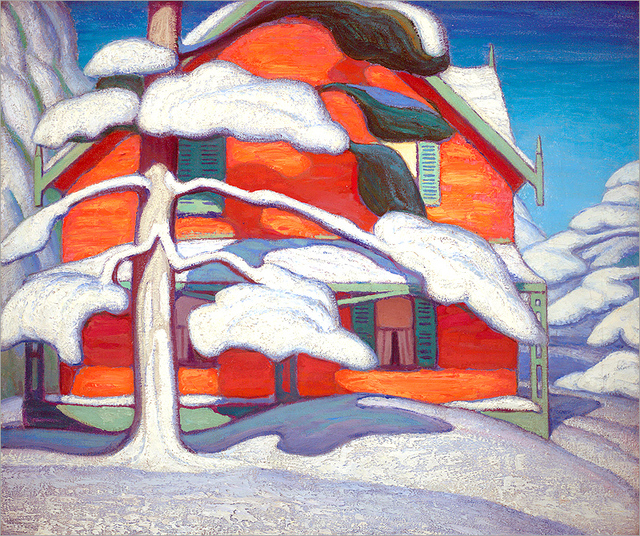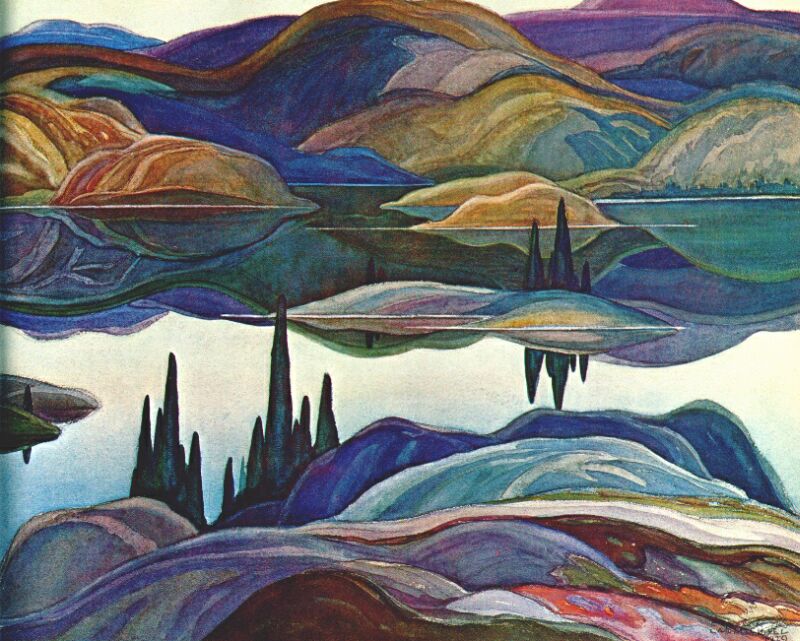Jen, Trish, Terry, Barb, and I carpooled to the PEC Fibre Festival on Saturday. For being its only second year, it appeared to be really well attended. We split up and agreed to meet at noon. I did tour around the arena a couple of times and the vendors out the back. There, I purchased an heirloom tomato plant called 'Purple Calabash'. I wanted to try at least one variety of heirloom tomato this year. Skip has planted it in a really good, sunny, protected spot. Hopefully it will do well there.
I never did make it back to the barns where, unbeknownst to me, former student, longtime friend, and new alpaca farmer, Cathy Musselman was located. We do need to catch up on what's gone on in our lives the past 33 years so I do plan to visit her farm,
Silver Birch Alpacas, in the near future. Jen, Barb, and I also hope to stop in there on our way to our knitting retreat in November.
But I digress...
At the
Hooked on the Lake booth, punch needle kits were being sold. I finally decided on the Red Bird kit designed by Karla Gerard.
It came with the 8 Valdani thread colours
and the weaver's cloth with the design drawn on it.

I already owned the punch needle and threader which I've used for a
couple of other projects. I like the Ultra-Punch because the loop sizes are easily adjusted. I am using #3 for the project and #5 for parts of the centre of the sunflowers. The proprietor, Loretta Moore, explained that this medium size with #8 perle cotton threads or 3 plies of floss is used almost exclusively as the small size that uses only one ply is too tedious, and the large size that accommodates 6 plies of floss or #5 threads damages the fabric too much. Weaver's cloth is a cotton/polyester blend. It allows the fabric to 'mend' around the thread. Pure cotton would just shred without the polyester to give it strength.
The drawn design looks like the photo, however, punching is done from the back
so the image on the front will be the mirror image. Note to self, always transfer the design onto the fabric flipped on the vertical axis to yield the right orientation, especially if there is text.
The Valdani threads are beautifully hand dyed so there is lots of depth to the colours. For the sky, I'm blending the two blues as the design moves from one corner downwards. I'm really liking the result.
I punched the sunflower, stem and leaves quite densely. I'm not doing the sky quite as densely - it won't take me as long and I'm concerned I'll run out of thread otherwise. There are no stitchery stores nearby where I could purchase more Valdani thread.
I have also decided to put a crest on the red bird to make it more cardinal-like.
When I googled
the designer, Karla Gerard, I found lots of her whimsical designs that lend themselves to this technique. Then I realized a lot of Group of Seven paintings would, too. What do you think?
I finished a little baby cardigan I knit for my friends' granddaughter, due in September. I have knit this pattern, top-down Maile cardigan, at least 3 other times.
Buttons need to be purchased. I might even have enough yarn to knit a little hat as well.
The yarn is some acrylic I had on hand - easy care for the new mom. However, I'd like to knit something else with some superwash merino - perhaps a yoked cardigan with little sheep on the yoke?

















































